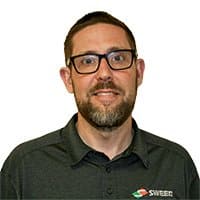ASK THE EXPERT: 5 questions about nonferrous chopping lines
As seen in Recycling Today magazine
What are the top three factors to consider before purchasing a nonferrous chopping line?

The first factor to consider is the manufacturer’s experience and knowledge, but the equipment’s capabilities are equally important. Your investment should be a solution for your specific needs with the ability to grow with your business rather than a one-size-fits-all system.
Next comes line flexibility: The type of material you receive often fluctuates in the scrap business. When investing in a nonferrous recovery line, consider whether the system is flexible enough to process other materials or whether it can easily be expanded or upgraded should your material intake change. Building as much flexibility as possible into your system allows you to process a range of materials, thus increasing your buying power.
Finally, simply put, when your system isn’t running, you’re not making money. Processors should consider the ease of maintenance and the availability of replacement parts when considering purchasing a chopping line. If parts are difficult to get or are only available overseas, in an emergency that could mean the difference between being down one day versus one week (or longer.) Additionally, you want your line operators running the system, not spending their time working on a system that’s grueling to perform general maintenance on. If a system is cumbersome and it’s difficult to access frequently replaced parts, consider a manufacturer that has a more maintenance-friendly design.
Does wire quality and/or copper content affect a system’s design?
Different scrap types, mixes and quality all affect system design. For example, material with higher copper content will run at higher throughput and may need less processing than low-grade material; a system should be designed with these considerations. Testing your material in SWEED’s state-of-the-art demo system helps to develop the best design option and provides a realization of the high-quality end-product produced in a SWEED chopping line, despite the material being processed.
How many operators are required to run a chopping line, and how much throughput can I expect?
Most SWEED systems need two operators: one to feed the line and move material, and one to monitor the material flow and commodity purity.
The throughput largely depends on the size of your processors and screens and consistency in feeding.
The number of operators doesn’t change as volume increases, meaning operating cost decreases as volume increases.
What are my expected maintenance and operation costs to successfully and sustainably operate a chopping line?
The cost to run and maintain a chopping line will fall between 1.5 cents and 3 cents per pound, including labor, spare parts and downtime. However, maintenance and operating costs for a chopping line will vary depending on several factors. The overall size and scope of the operation will dictate its operating and maintenance costs. For example, a system processing low-yield ICW at 1,500 pounds per hour will differ from a large-scale system processing the same material at 6,000 pounds per hour. As previously noted, it costs more per pound to run less scrap volume than a large volume system.
Another factor affecting operating and maintenance costs is operating the right equipment for the job. There is nuance for spreading material burden throughout a system and efficiently processing with high-purity recovery. SWEED specializes in custom systems and focuses on designing to the customer’s need, with contingencies.
Can my existing components be incorporated into a new nonferrous chopping line?
Absolutely! Line integrations can be a tricky but effective way to maximize the use of existing equipment with life left in it. SWEED can integrate equipment and or electrical controls, providing engineering and control support through the process to make for a seamless transition.

